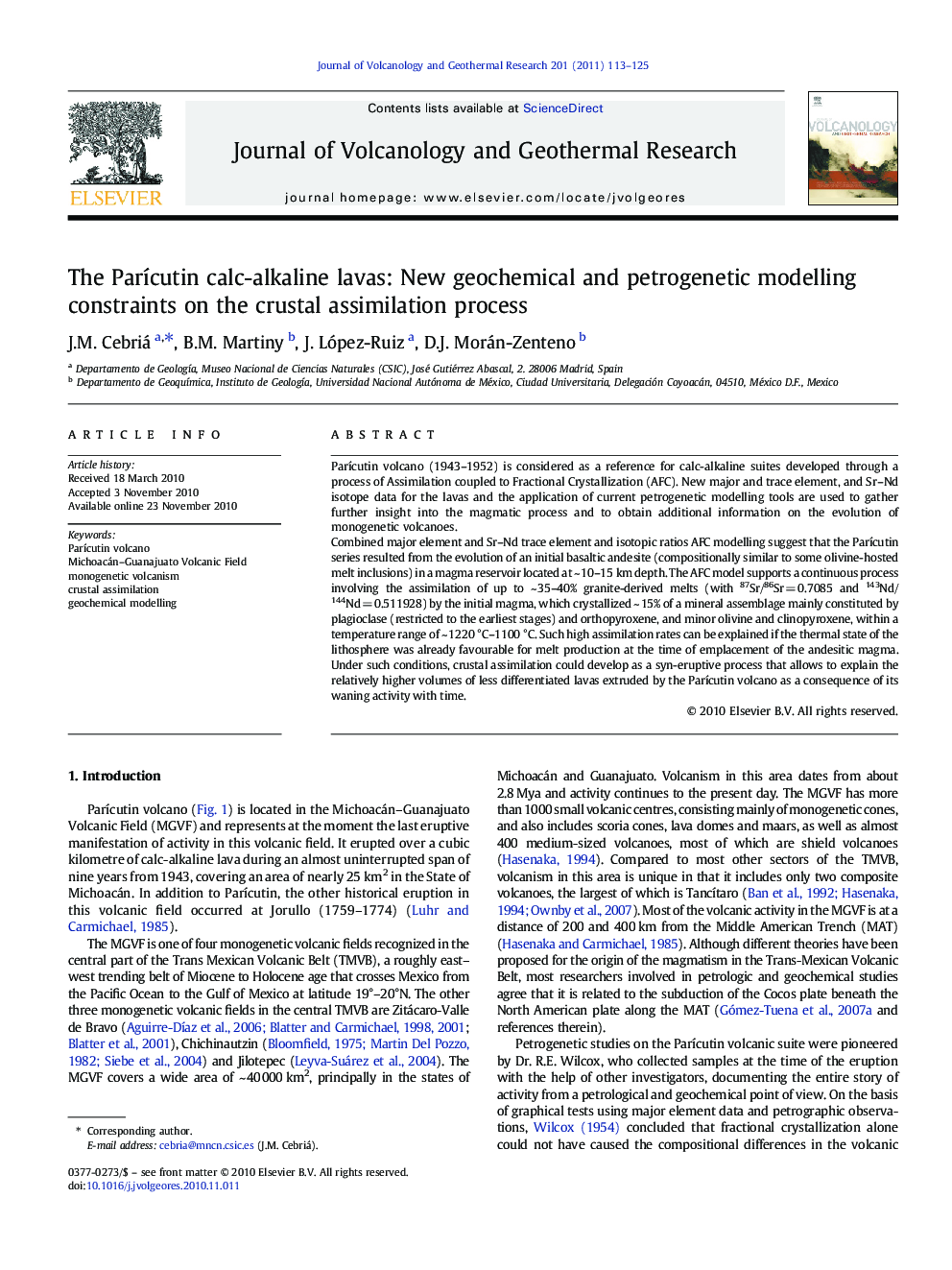| کد مقاله | کد نشریه | سال انتشار | مقاله انگلیسی | نسخه تمام متن |
|---|---|---|---|---|
| 4714044 | 1638406 | 2011 | 13 صفحه PDF | دانلود رایگان |

Parícutin volcano (1943–1952) is considered as a reference for calc-alkaline suites developed through a process of Assimilation coupled to Fractional Crystallization (AFC). New major and trace element, and Sr–Nd isotope data for the lavas and the application of current petrogenetic modelling tools are used to gather further insight into the magmatic process and to obtain additional information on the evolution of monogenetic volcanoes.Combined major element and Sr–Nd trace element and isotopic ratios AFC modelling suggest that the Parícutin series resulted from the evolution of an initial basaltic andesite (compositionally similar to some olivine-hosted melt inclusions) in a magma reservoir located at ~ 10–15 km depth. The AFC model supports a continuous process involving the assimilation of up to ~ 35–40% granite-derived melts (with 87Sr/86Sr = 0.7085 and 143Nd/144Nd = 0.511928) by the initial magma, which crystallized ~ 15% of a mineral assemblage mainly constituted by plagioclase (restricted to the earliest stages) and orthopyroxene, and minor olivine and clinopyroxene, within a temperature range of ~ 1220 °C–1100 °C. Such high assimilation rates can be explained if the thermal state of the lithosphere was already favourable for melt production at the time of emplacement of the andesitic magma. Under such conditions, crustal assimilation could develop as a syn-eruptive process that allows to explain the relatively higher volumes of less differentiated lavas extruded by the Parícutin volcano as a consequence of its waning activity with time.
Research Highlights
► The Parícutin lava series can be explained by AFC in a magma chamber at ~3.5 kb from ~1220°C-1100°C.
► Initial magma assimilated granite-derived melts and crystallized an assemblage dominated by Ol+Plg during an early stage and by Opx during a second stage.
► Early Plg fractionation argues against significant H2O contents in the initial magma but subsequent cessation of Plg fractionation suggests that H2O was introduced along the contaminant.
► The observed relationship between the degree of differentiation and volume of erupted lavas with time can be explained if AFC was a syneruptive process.
Journal: Journal of Volcanology and Geothermal Research - Volume 201, Issues 1–4, 15 April 2011, Pages 113–125